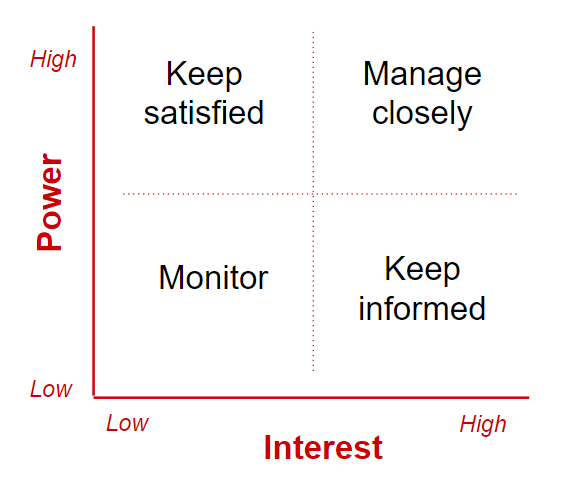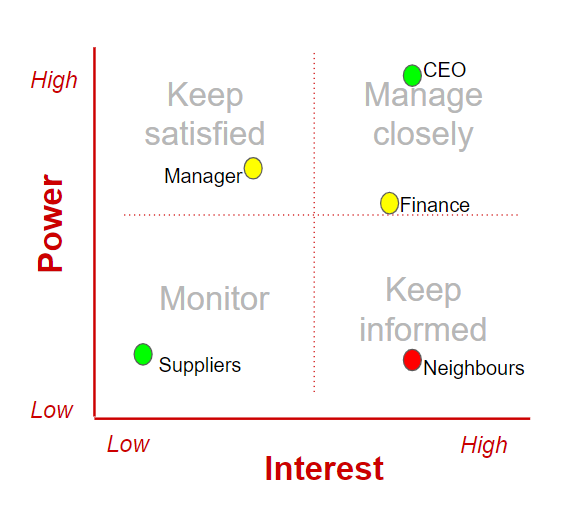
In the previous post I talked about stakeholders – those who have a vested interest in what you do and that can affect or be affected by any decision or change you want to make.
Stakeholders have great importance because of the power they may have to influence your decisions. For example, your manager might have the power to stop you from doing something, or you might need their support to get something done.
So before you make a change, it’s worth thinking about your stakeholders in terms of:
- their power to help or hinder the change, and
- their interest in you and your change.
There is a well-known tool that can help with this called the ‘power-interest’ grid. It looks like this:

So take your list of stakeholders, and place each one where you think they are on the grid. This will tell you the strategy you will need to take with them.
- Low power, low interest – you don’t have to expend any effort for these people. They’re not too bothered, but monitor them in case things change.
- High interest, low power – these people should be kept informed of what’s going on, but they can’t do much to influence the change.
- Higher power, low interest – you need to keep these people informed and satisfied, because although they don’t have much interest, they may use their power in an undesirable way.
- High interest, higher power – these are the people you need to take most care and effort with. Manage them closely, keep them informed and fully engage with them.
Your grid will start to look like this. You can add an extra dimension with colour coding (green=’supportive’, amber = ‘neutral’, red = ‘against’).

Remember this is just a snapshot of where your stakeholders are now. Things can change so you need to regularly revisit this. This tool might also tell you if there are any gaps, or whether you need to try and move stakeholders into a different quadrant. For example, do you need someone with power to sponsor your project? How can you move that person to the ‘high-power, high interest’ area?
Like any tool, its main use is in getting you thinking and planning. And the results are only as good as the information you put in. You might do this based on your own experience with your stakeholders, or you might go out and talk to your stakeholders to get a better understanding of their thinking.
So think carefully about your shareholders the next time you or your team are thinking of embarking on a change and see if it makes a difference.